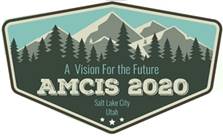Loading...
Abstract
The Management Information Systems (MIS) department at Temple University developed a new undergraduate curriculum map around the following organizing principle: Teach how to use, design, architect, and manage API centric applications in organizations. The MIS department redesigned our introductory course (taught to all Temple FOX Business School Students), Version 1.1, represents a paradigm shift in IT Business philosophy, where IT Pros are Digital Product Managers (DPMs). They envision, plan for, deploy and support digital products and services which solve problems for organizations. These DPMs must have strong technical skills, understand the users of their products and how they interact with their systems and have an intimate understanding of their business and the problems that their business needs to solve. Our delivery framework builds upon the foundation we created in MIS 2101 Version 1.0 and incorporates many of the tools and techniques we developed. The delivery technique remains unchanged and we conceptualized this as the “Active Learning Funnel” incorporating three significant dimensions: Technology, Content and Activity that form an Enhanced Learning Environment including our flipped classroom. (Lavin, Martin, Sclarow 2018) The last third of the semester marks a significant transition in content, material and flipped classroom approach. Up until this point in the semester, we discuss digital products in the context of being a Digital Product Manager; most students don’t actually understand what software really is. During weeks 10-14 we give the students a very simple introduction to programming using JavaScript, following the same “Active Learning Funnel” approach that they are familiar with utilizing the flipped classroom methodology. The course design is based on a 120-student sections model where we have two Information Technology Assistants (ITAs). During class ITAs and the professor walk around to answer questions during In-class activities where students are paired to work on their activities. Having one assistant per 40 students is not sufficient and we encouraged our students to go around the classroom to help each other. Classes were moved on-line because of Covid-19 on March 16, 2020. We pivoted from in-person to online delivery. Two different approaches were compared to encourage students to continue working together and learn from each other; one with three large breakout groups (one assistant per group), and one with nine breakout groups (where assistants would move in and out of three groups each). The latter solution appeared to work better, because there was more direct interaction between students. Encouragingly, across all variations on breakout groups, students were likely to contribute solutions to for example coding problems.
Recommended Citation
Sclarow, Steve and Raven, AJ, "Teaching JavaScript while Flipping the IS Classroom" (2020). AMCIS 2020 TREOs. 17.
https://aisel.aisnet.org/treos_amcis2020/17
Abstract Only
When commenting on articles, please be friendly, welcoming, respectful and abide by the AIS eLibrary Discussion Thread Code of Conduct posted here.


